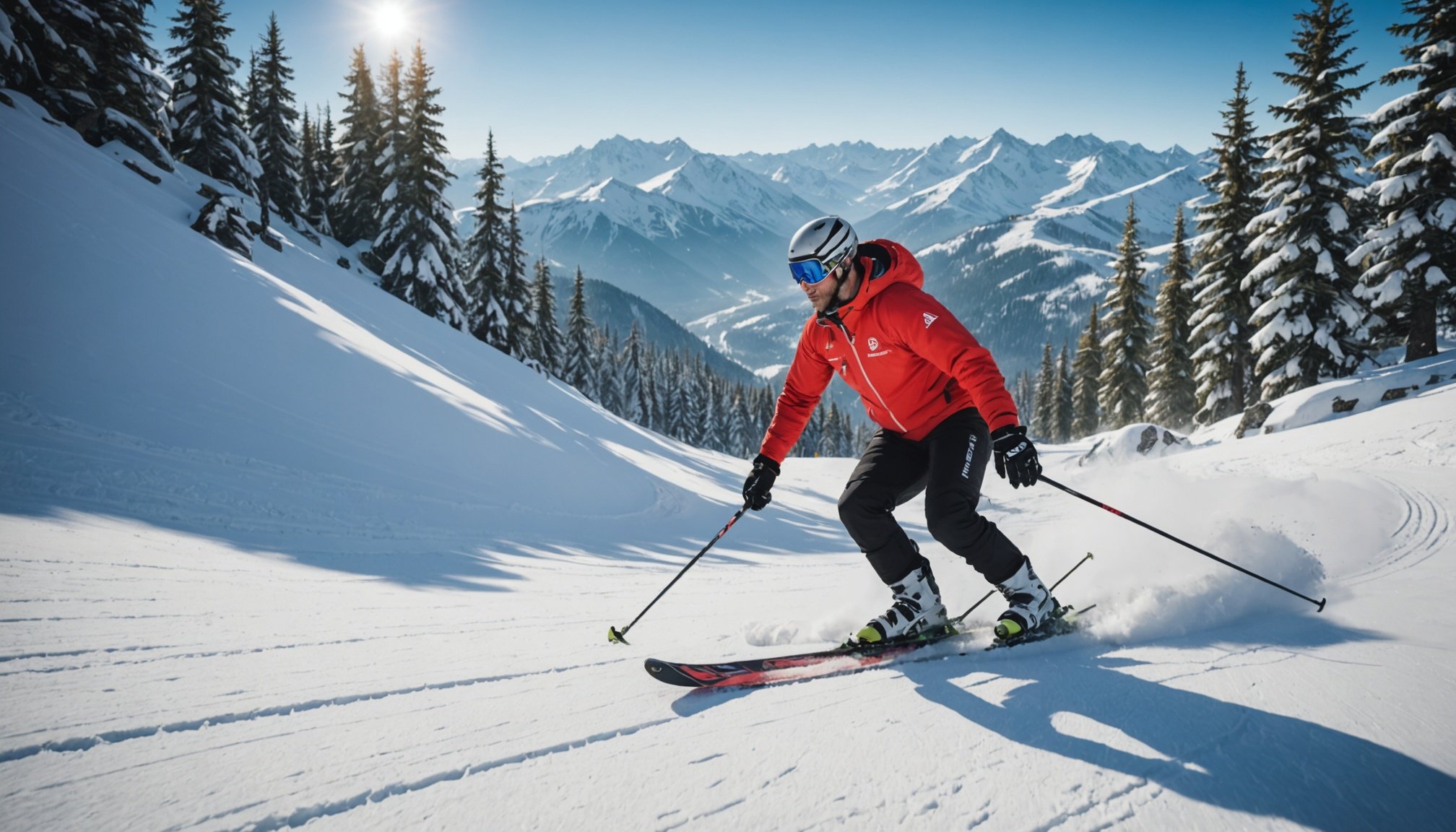Understanding Snow and Ice Physics in Game Development
Incorporating snow physics and ice physics into game development is a complex yet rewarding endeavor. Understanding the unique properties of snow and ice, such as their texture and response to environmental changes, can significantly influence gameplay dynamics. Snow, for instance, can add realistic limitations to characters’ movements, such as making them slower or impacting traction. Ice physics often present additional challenges, including slippery surfaces that affect control and strategy in the game.
The transition from real-world behavior to simulation in games involves adjusting these properties to fit gameplay needs while maintaining a sense of realism. Simulated snow and ice may lack some physical nuances of their real-world counterparts, such as varying densities of snow or the way ice might crack under pressure. However, developers aim for a balance that enhances player interaction and engagement.
Also read : Harnessing ai to create adaptive music scores for rhythm games: a creative revolution in gaming soundtracks
Realistic physics for games involving snow and ice are crucial for player immersion. By replicating the natural behaviors of these elements, players can experience a more lifelike environment, where the physics react predictably and authentically to actions. This enhances the gaming experience by providing intuitive and exciting challenges that leverage the unique physics of snowy and icy terrains.
Essential Techniques for Simulating Snow in Games
Creating realistic snow simulation in video games has become an art, especially with the increasing power of particle systems. These systems are crucial for crafting dynamic snow effects, a cornerstone of immersive gaming experiences. Utilizing particle systems, developers can mimic the behavior of snowflakes, giving life to fluttering snowstorms or gentle snowfalls. They offer control over variables like size, shape, and velocity to create breathtaking visuals that respond to environmental changes.
In parallel : Revolutionizing facial animations in rpgs: how developers can harness machine learning for stunning character expressions
One captivating technique in snow simulation is allowing for soft snow interactions with characters and objects. This involves programming snow to deform or crunch underfoot, thereby creating an illusion of depth and authenticity. To achieve this, developers focus on integrating collision detection and physics-based interactions, factors that enable snow to yield to pressure or slide off surfaces naturally. These interactions heighten realism, making players truly feel the icy terrain.
Moreover, developers are constantly innovating unique approaches for snow accumulation and deformation. Through advanced game techniques, snow can gradually pile up on rooftops or melt away under certain conditions. This is achieved by using layered textures and shaders that transform in real-time based on gameplay dynamics. By focusing on these intricate details, games can offer visually stunning and engaging environments.
Implementing Ice Mechanics in Winter Sports Games
In the fascinating world of winter sports games, ice mechanics play a pivotal role in enhancing the gaming experience. The simulation of friction and grip is vital for creating authentic ice physics. Accurate friction modeling helps simulate the resistance and smoothness that players encounter when moving across different ice surfaces. This aspect is critical because it dictates how characters glide, handle, or come to a stop, directly affecting gameplay interaction.
Realistic sliding and skating dynamics transform sports simulations entirely. By implementing precise ice mechanics, developers can replicate the challenges of maneuvering on ice. It includes everything from subtle turns during a figure skating routine to the quick sprints of an ice hockey player. These dynamics are crucial for keeping the gameplay both engaging and believable.
Adjusting player control responsiveness based on varying ice conditions is another essential element. When players traverse over rough patches or recently resurfaced ice, their ability to swiftly alter direction or speed should change accordingly. A well-calibrated responsiveness system can make users feel more connected to the on-screen action, mimicking the unpredictability of real life ice conditions. By focusing on these core aspects, game developers can craft immersive and realistic winter sports experiences that captivate players.
Coding Techniques for Realistic Winter Environments
Creating a convincing winter environment in game development requires a sophisticated approach to game coding. To accurately simulate the distinct properties of snow and ice, employing a robust physics engine is vital. These engines help in replicating the physical interactions within wintry landscapes, allowing snow to compress under weight and ice to be as slippery as required, enhancing realism.
One essential technique is integrating terrain variations to cater to the intricacies of winter sports. By modifying programming techniques, developers can craft terrains that respond dynamically. For example, by inserting specific code snippets, you can simulate powdery and packed snow variations that impact speed and movement differently in the game engine. This adds an additional layer of strategy and immersion for players, transforming the play experience.
Optimizing performance in winter-themed games is also crucial. Excessive processing demands from sophisticated physics calculations can strain the system. To tackle this, it’s advisable to simplify collision models for snow and ice while maintaining visual fidelity. By adjusting resolution and adopting efficient coding structures, developers can ensure smooth performance without compromising the immersive winter landscape. Embracing these game coding methods allows for a realistic, engaging experience in winter environments while maintaining system efficiency.
Case Studies: Successful Implementation of Winter Sports Physics
In the realm of winter sports gaming, case studies provide invaluable insights. An analysis of popular winter sports games reveals various best practices and successes in implementing realistic physics. A pivotal factor for successful games is the authentic simulation of snow and ice surfaces, which can pose significant challenges for developers.
Physics Approaches in Popular Games
The intricacies of snow and ice physics are often showcased in successful games through advanced simulation technologies. These games typically use a hybrid physical modelling approach to accurately reproduce the unpredictable nature of winter terrains. Developers who have achieved success in this domain illustrate the importance of adjusting physical parameters to replicate real-world conditions faithfully.
Lessons From Successful Game Development Projects
Lessons learned from past projects highlight the necessity of iterative development and thorough testing. Successful developers have employed adaptive feedback loops, allowing them to refine their physics engines continuously. This strategy ensures a high level of precision and realism, which players have come to expect.
Common Pitfalls and Solutions
Despite these successes, common pitfalls exist, often revolving around computational demands. Effective solutions include optimising algorithms to balance performance and realism and employing playtesting to uncover potential issues early in the development process. Addressing these aspects can make the difference between a merely good game and a widely acclaimed experience.
Best Practices for Enhancing Game Authenticity
When striving to elevate game authenticity, developers can tap into a variety of methods designed to improve the overall player experience. One effective strategy involves integrating real-world weather and environmental factors into the game. By doing so, developers create scenarios that mimic natural conditions, ultimately making the virtual world more immersive and believable.
Incorporating realistic physics outcomes is another critical aspect. This ensures that player feedback within the game aligns with what would logically occur in real life. For example, when a character interacts with water, the resulting splash or ripple should mirror reality. This level of detail not only enhances authenticity but also increases player satisfaction.
In addition, continuous improvement through rigorous testing and player feedback collection is paramount. Developers should foster an environment where feedback is actively sought and implemented. This iterative process not only refines the game mechanics but also keeps players engaged and invested in the game world.
Here are essential development tips for enhancing game authenticity:
- Use real-world data for environmental factors
- Align game physics with real-life outcomes
- Consistently gather and apply player feedback
By meticulously balancing these elements, developers can craft games that are not only technically sound but deeply immersive and engaging for the players.
Resources and Tools for Game Developers
Creating a winter wonderland in a virtual space requires the right development tools and resources. To simulate winter environments effectively, developers often look for curated libraries and downloadable assets. These assets include a variety of textures, models, and scripts specifically designed to enhance the realism of snow-covered landscapes, icy surfaces, and winter-themed decorations.
Online tutorials and courses offer in-depth knowledge on handling the complex physics of snow and ice. Platforms such as Udemy and Coursera have courses that guide developers through the dynamics of snow accumulation, wind effects on snow, and realistic ice reflection. These educational resources are invaluable for understanding how to integrate such details into your game and ensuring that your snow reacts to the game’s physics engine in visually compelling ways.
Community forums like Reddit’s gamedev and Unity’s discussion boards provide ongoing support. Engaging with these communities can help resolve specific challenges, exchange assets, and get feedback on your work. Contributing to and learning from these platforms can foster new ideas and offer support through your development journey.
By leveraging a combination of libraries, development tools, online courses, and community resources, game developers can create immersive and realistic winter environments that captivate players.






